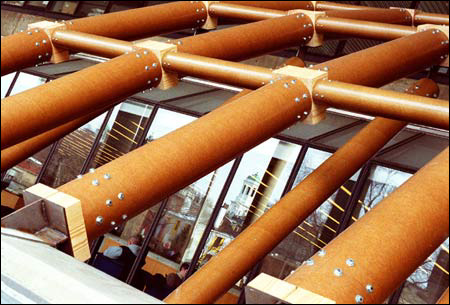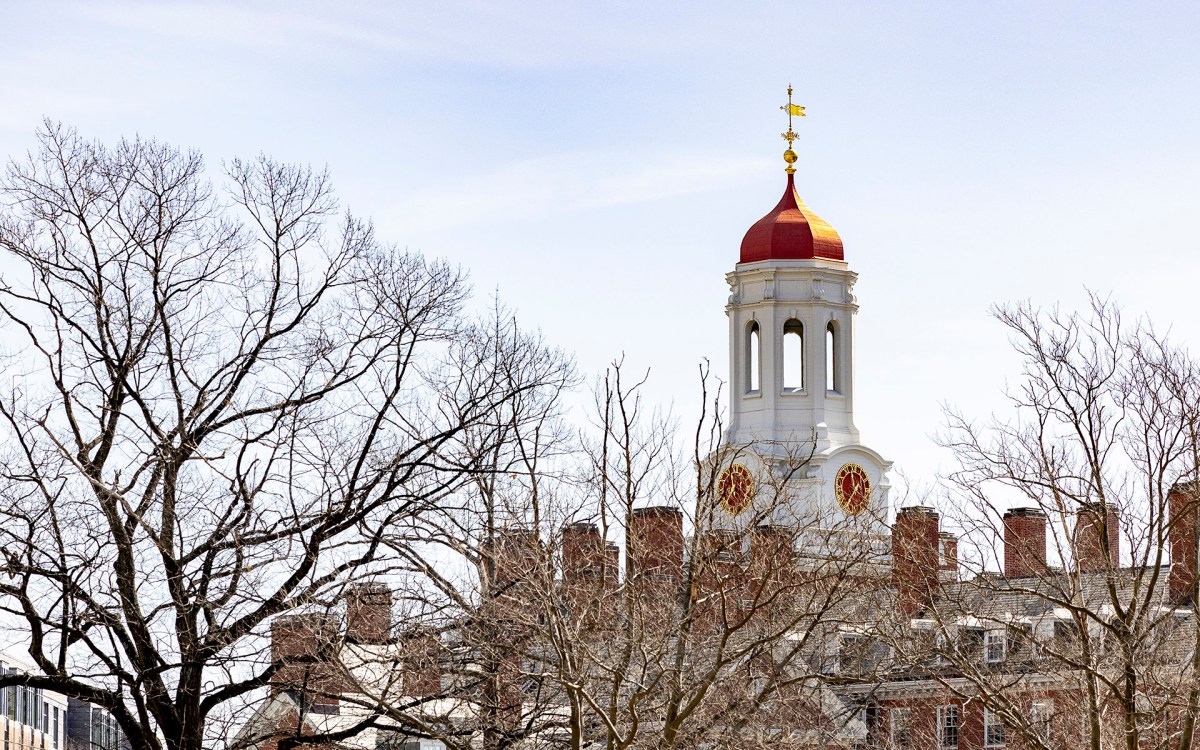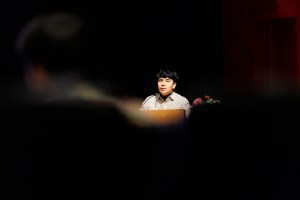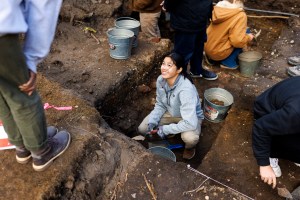The power of paper (and cardboard, and plywood):
GSD’s exhibit of Ban’s braced and balanced constructions defies expectations

What is a building?
Shigeru Ban has obviously asked himself that question and come up with answers that do not necessarily correspond to prevailing assumptions.
For example, when most of us think of building materials, we think of wood, stone, steel, glass, brick, and concrete. Do any of us think of paper?
Ban has. Some of his best-known constructions are made from cardboard tubes and reinforced paper panels called Sonoboard. True, he also uses steel fasteners and strips of plywood, but the overall effect of his structures is of extreme lightness. They look as if a few strong men could pick one up and move it to a new location like moving an armchair or a sofa. And yet they also seem to embody strength, a braced and balanced toughness like the wings of a biplane.
The current exhibition at the Graduate School of Design’s (GSD) Gund Hall, “Paper, Wood, and Bamboo: Structural Innovation in the Work of Shigeru Ban,” is an eye-opening and sensuous introduction to Ban’s designs, combining drawings, photographs, models, and full-sized – or almost full-sized – constructions.
Ban is also a leading member of Team Think, a group of architects whose design for a structure on the site of the World Trade Center (WTC) is now one of two finalists, the winner to be decided by the end of February. The proposed structure is a pair of latticework towers (constructed of steel, not paper), which encompass indoor gardens and an evolving program of buildings by other architects.
Compared with the WTC design, the designs featured in the GSD exhibition are much smaller in scale and embody the economy of means and preference for inexpensive and recycled materials that characterize much of Ban’s work. Curated by Kim Shkapich, the exhibition managed to convey the feel as well as the concept of Ban’s constructions.
The sense of actuality is heightened by the work done by members of a workshop class taught by Joseph MacDonald, assistant professor of architecture. Over the course of the past term, the students built structures inspired by Ban’s designs.
For example, Daniel Adams and Jason Long have built a section of Ban’s Paper Dome, placing it outdoors against the side of Gund Hall adjacent to Loeb Library. Treated with polyurethane, the cardboard tubes stand up well to weather, and the sophisticated system of wood and steel joints gives it a surprising rigidity.
Another interesting structure is the Paper Log House, constructed for the exhibition by Zora Boyadzhieva and Andrea Day. Ban created the original for disaster relief in his native Japan. It has been used subsequently all over the world and has given him international recognition. Made from such things as cardboard tubes (often used to roll bolts of fabric), beer crates filled with concrete, and plastic tarpaulins, the structure provides a safe and dry temporary structure, adaptable to many different climates.
“There is something Japanese about the work. When you see these paper tubes, you can’t help but think about bamboo,” MacDonald said.
The Imai Hospital Daycare Center, a section of which was constructed by Mark Oldham and Matthew Snyder, shows how ordinary plywood can be used to create a remarkably taut and airy structure with roots in traditional Japanese joinery.
Although Ban has become an icon for advocates of “green” and “eco-friendly” architecture, MacDonald says that the real intention behind his work is slightly different.
“It’s really more an ideology against waste. It’s also about invention, curiosity, discovery, and about tackling problems with great relish and with a sense of humor,” he said.




